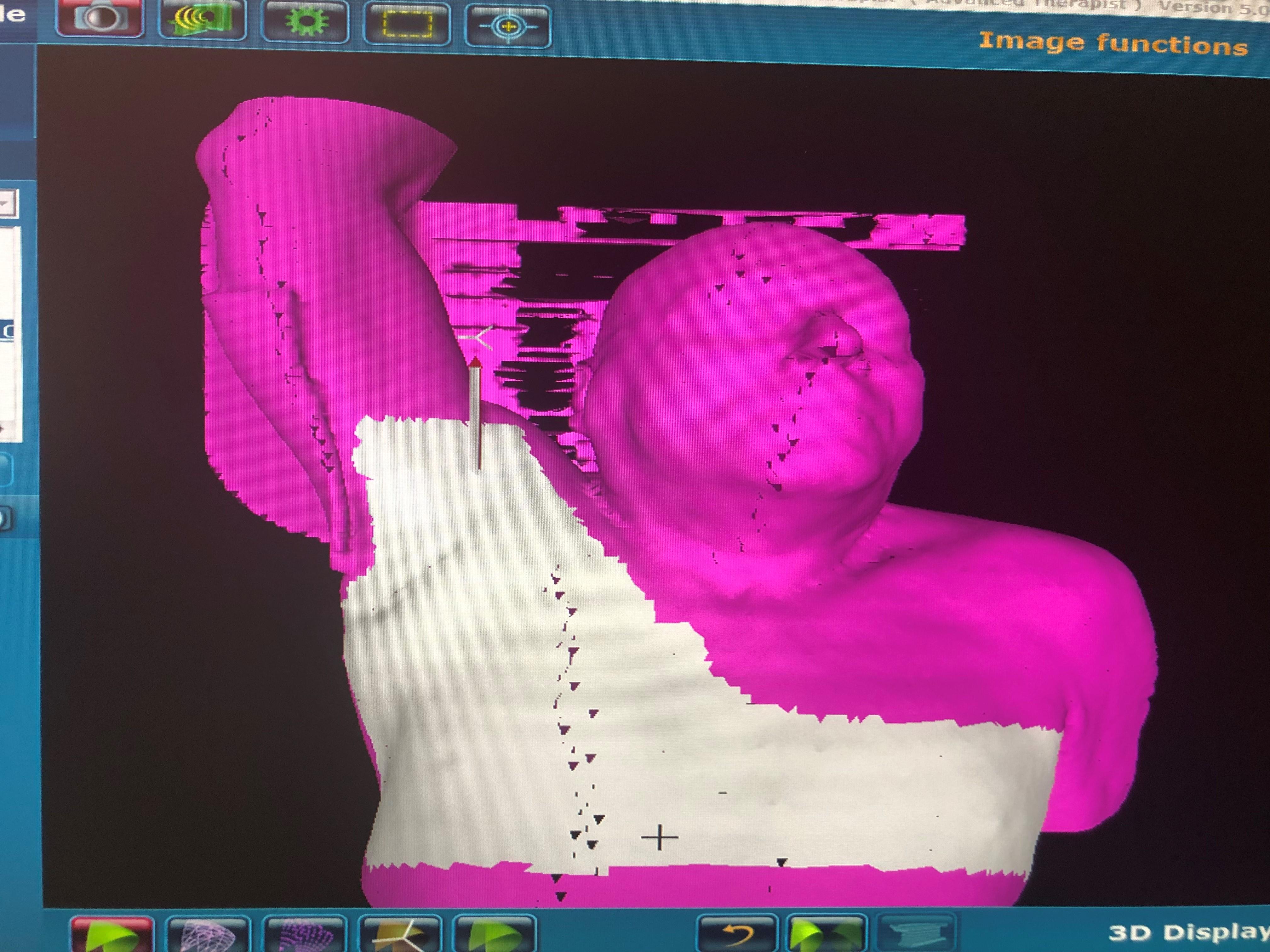- Tue May 21, 2019 8:44 pm
#249
Hi Corinne
You want the arm position to be as accurate as possible with the AlignRT setup? We have managed to get residual error to the bony shoulder joint inside acceptable 7 mm in more than 90% of the fractions accuracy with only AlignRT quidance (without couch shifts based on IGRT) lately with the mastectomy and breast+lymph nodes patients in LNG and LAT directions. This has been possible with the ROI which covers mostly bony chest wall structures and excludes the areas near armpit. Arm position is verified with treatment capture only. With the current fixation we see the entire arm in V(ision?)RT setup surface, which is advantage now of course. I think if we monitor the large ROI which includes information from both the arm and chest wall at the same time, we do not know what to correct in the setup, so we keep those structures separated. Still we do not know exactly how accurately the surface of the axilla area is located, which is the concern in your case, since we do not yet acquire CBCTs in the daily practice. It is also worth to think that should there be another larger AlignRT ROI for the treatment, which takes account the possible intrafractional shift of the arm.
So, I can give you my choises, even so that I do not know enough of the big picture that you have there. In this case I could separate the setup ROIs, because it seems difficult to conclude in which part of the patient there is rotation, roll or pitch with your ROI. Is it the arm or the chest wall that we should correct in the setup? (The color view feature gives you the information of the skin, is it above or below and it could help you a bit, if you want to keep that ROI.) So, I could first setup the patient with the chest wall ROI to see that the entire patient position is near correct on the couch, then take treatment capture and with it correct the arm position and chin that you mentioned. I could rotate the treatment capture all over on the screen to see that everything looks good. Then I could monitor the additional arm/axilla ROI for a while to see that the deltas are also inside thresholds. That may even be the most important ROI, since the isocenter is located there…. If the skin is the most important, I could acquire daily half arc CBCTs to match the images and do the possible couch shifts and acquire new reference surface for the treatment (to another AlignRT "treatment field" with larger ROI, which you have created in the record mode).
Finally if you have plenty of these kind of patients, you can create couple workflows/ROIs which you consider possible to the setup the axilla and compare those. Either setup with those possible ROIs on different days to see if one leads to smaller residual errors (isocenter and displacement errors of the structures) in the images or setup with one ROI and monitor additional ROI for a while after couch shifts and collect the monitoring data from those ROIs, retrospectively, from the AlignRT data. Then you can see which ROI/workflow leads nearer the target with smaller displacement errors of the structures in the first place and begin to use that one. Practicality in the setup process is one important indicator of course. Hope there was something that was helpful.
BR RTT Marko


